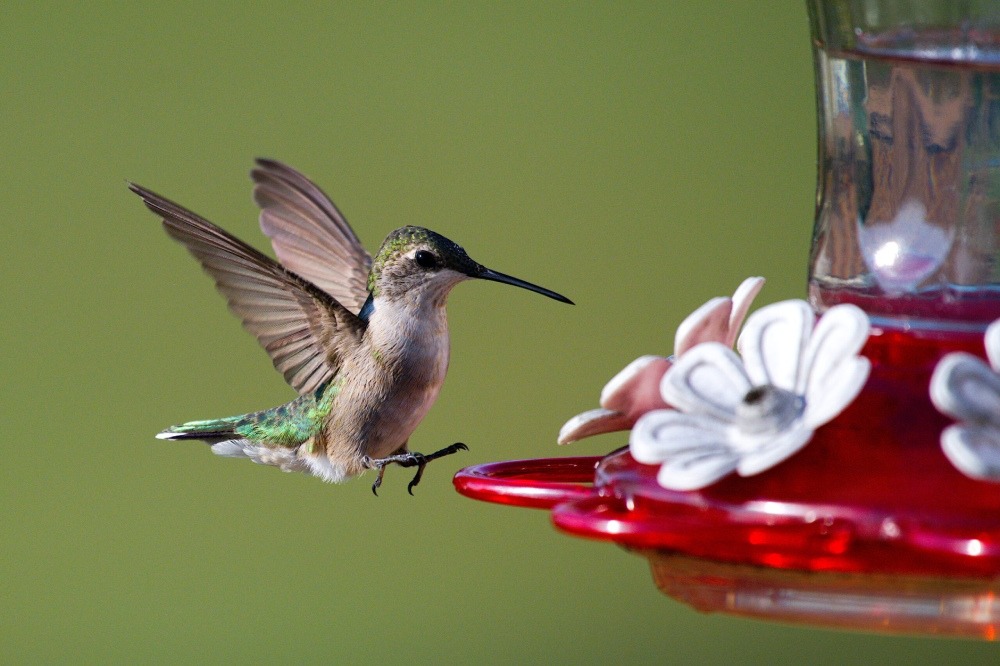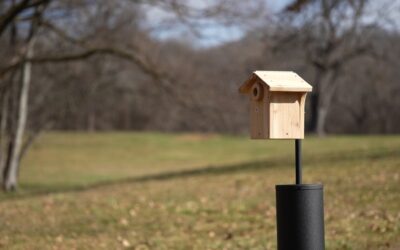With summer on the way, hummingbird nesting season isn’t far behind. If you want to see more of these quick, curious birds in your yard, now’s the time to set up your feeder. Here are a few simple tips to get started.
Setting Up Your Hummingbird Feeder
The best feeders have bee guards over the feeding ports—these allow only the long tongue of a hummingbird to reach the nectar. This feature becomes especially useful in mid- to late summer, when flowers stop blooming and bees begin searching for other food sources. Without guards, bees can quickly take over and discourage hummingbirds from visiting.
Most feeders include a built-in moat to keep ants out of the nectar. While effective, these moats need to stay filled with water to work—which can be tough to keep up with in the summer heat. One trick I like to use instead is twisting a pipe cleaner into a loop, adding a drop or two of 3-IN-ONE oil, and using it to hang the feeder. Ants won’t cross the oiled pipe cleaner—just be careful not to get oil on the feeder itself.
Once your feeder is ready, hang it in an open area where hummingbirds can easily see and access it. Avoid placing it near dense vegetation, where predators might be hiding.
Filling the Feeder
It can be tempting to buy premade red-dyed nectar from the store, but the dye is unnecessary and may not be the healthiest option for hummingbirds. Luckily, homemade nectar is easy to make—and just as effective.
Mix one cup of sugar with four cups of water in a saucepan. Heat slowly until the sugar dissolves, then let the mixture cool before adding it to the feeder. Extra nectar can be refrigerated for later.
A common mistake is filling the feeder to the top right away. If the nectar isn’t consumed quickly, it can start to ferment. Instead, start with about a quarter of the feeder’s capacity and adjust based on how fast it’s being used. Ideally, replace the nectar every one to two days—or daily in hot weather. And don’t forget to clean the feeder before each refill to prevent mold buildup.
Hummingbirds may be small, but they bring big energy to any yard. With just a few simple steps, you can give them a reliable stop on their journey—and enjoy their aerial acrobatics all summer long.
Featured photo by Adam Warren




